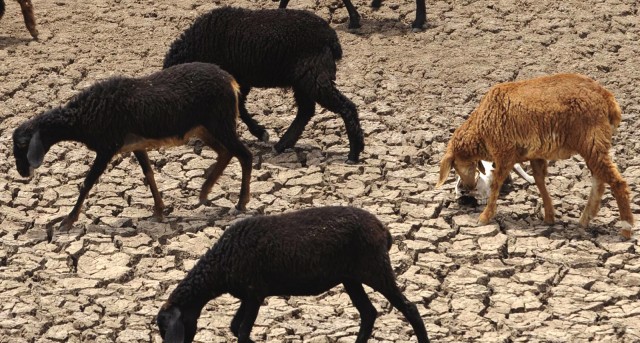
The annual rains, which sweep across the subcontinent from June to September, were 16 percent below normal last month. After arriving ahead of schedule they have stalled over central India, below the parched, northern plains which are still counting the cost of last year’s failed monsoon – the worst in nearly four decades.
Right now, the “monsoon is not behaving as expected”, weather office director general Ajit Tyagi said, although he predicted that the final rainfall figures for the season would be “normal”. Not content with the promises of meteorologists, some people in the northern holy city of Varanasi have been conducting “frog weddings” – marrying frogs with full Hindu rituals in a tradition believed to please the rain gods.
The slow onset of the rains has postponed soybean planting in the world’s top edible oils importer and could delay rice planting in the northern grain bowl states of Haryana and Punjab.
The uncertain start to the rainy season means more worries about food inflation, which is already running at nearly 13 percent and has a major impact on India’s impoverished millions, the Congress-led government’s core support. The government needs a decent monsoon to help rein in the price rises that have triggered opposition-led demonstrations around the country.
The meteorological department’s chief monsoon forecaster, D Sivananda Pai, has put the stuttering start to the season down to “glitches” and his department says overall rainfall may be slightly above average. July is the most critical month from a planting perspective – the time when India usually receives the maximum amount of rain.
Agriculture Secretary PK Basu said if rainfall was delayed beyond July 5 over northern India it would give cause for worry. With only 40 percent of arable land under irrigation, India’s 235 million farmers rely on the capricious rains to soak the rock-hard earth and turn it into fertile soil.
A bad monsoon can spell financial disaster, wiping out livelihoods for many small landholders eking out a living.
The farm sector’s contribution remains vital to the national economy by supporting 700 million rural Indians and fuelling consumer demand.
“A good monsoon this year is critical from all sorts of standpoints – from consumer demand, to inflation, hydroelectric power and water availability,” said Dharmakirti Joshi, economist at Indian credit rating agency Crisil.
“You can withstand one monsoon failure, but two monsoon failures would make things very difficult,” Joshi told AFP.
There is no danger of a famine as the country still has healthy wheat and rice stockpiles from four years of bumper harvests.
But analysts say the challenge for the government is to maintain a steady supply of foodgrains in the market to ensure stable prices and prevent hoarding and black marketeering.
Published in The Express Tribune, July 5th, 2010.

1731570357-0/elon-musk-(1)1731570357-0-165x106.webp)
-(1)1717678110-0/Kendrick-(1)-(1)1717678110-0-165x106.webp)





1732445375-0/Untitled-design-(9)1732445375-0-270x192.webp)








COMMENTS
Comments are moderated and generally will be posted if they are on-topic and not abusive.
For more information, please see our Comments FAQ